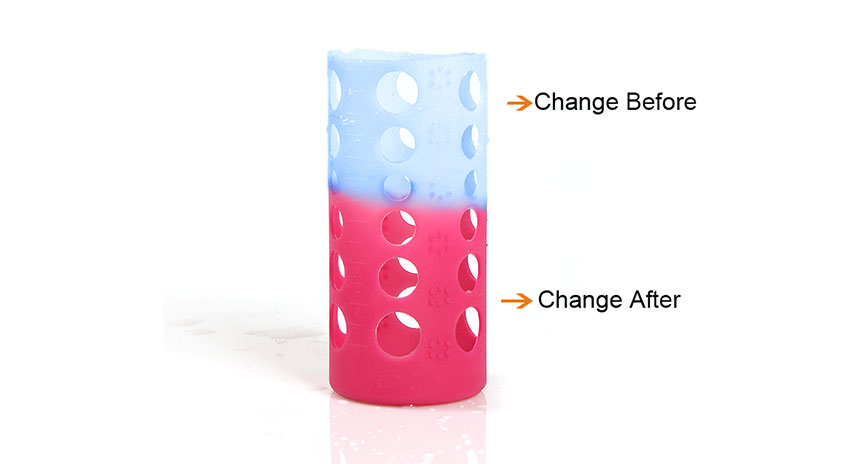Thermochromic plastic products have captivated the attention of users worldwide. Imagine your plastic drinking cups that transitions from a vibrant blue to a warm red as you pour in your favorite hot beverage, or a toy that morphs into different hues when exposed to varying temperatures. These captivating transformations are made possible through the innovative use of temperature-changing color masterbatch. In this article, we will use simple languages to show you that producing plastic products that mesmerize with their color-shifting abilities.
Understanding Temperature Resistance Requirements:
When it comes to temperature resistance, the Thermochromic color masterbatch emerges as the frontrunner. This formulation can withstand temperatures of approximately 200 degrees Celsius, making it suitable for a wide range of applications. In contrast, using color additives in the masterbatch is not recommended due to their limited temperature resistance. Therefore, the focus lies on Thermochromic colorless masterbatch for achieving optimal results.
The Role of Single-Screw Extrusion:
During the production of color masterbatch, the choice of extrusion equipment plays a pivotal role in maintaining the color-change stability of the Thermochromic pigment. Single-screw extruders are preferred in this process, as they minimize the risk of damaging the capsules that encapsulate the Thermochromic pigment. Double-screw extruders, on the other hand, can disrupt these delicate capsules, ultimately compromising the desired Thermochromic effect. Therefore, to ensure the highest quality output, it is recommended to employ single-screw extrusion techniques.
The Masterbatch Production Process:
Step 1: Selection of Thermochromic pigment:
The first step is to carefully select the Thermochromic pigment that will impart the desired color transformation. These powders contain microcapsules that enclose a specialized dye, which reacts to temperature fluctuations. By selecting powders with different activation temperatures, an array of Thermochromic effects can be achieved.
So far, as the leading manufactuer in China, iSuoChem can supply different color-change effect from color-color, color-colorless, even colorless-color.
Step 2: Masterbatch Formulation:
In this stage, the colorless masterbatch is prepared by combining the encapsulated Thermochromic powder with a carrier resin. The carrier resin serves as a vehicle to evenly distribute the powder throughout the plastic matrix, ensuring consistent Thermochromic properties.
Step 3: Extrusion:
Using a single-screw extruder, the masterbatch formulation is melted and extruded into uniform pellets. Careful control of temperature and extrusion parameters is crucial to maintain the integrity of the capsules and preserve the Thermochromic properties.
Step 4: Product Manufacturing:
The Thermochromic masterbatch pellets are then blended with the desired base plastic material, such as polyethylene or polypropylene, to create a thermochromic plastic compound. This compound can be used for injection molding, blow molding, or other manufacturing processes to create a wide variety of temperature-sensitive plastic products.
Plastic products that change color with temperature requires a deep understanding of temperature resistance, masterbatch formulation, and extrusion techniques. By harnessing the power of Thermochromic masterbatch and utilizing single-screw extrusion technology, manufacturers can unlock a world of possibilities and create captivating products that amaze and delight consumers. With their ability to transform and engage, these thermochromic plastic wonders continue to push the boundaries of creativity and innovation in the world of plastics.
